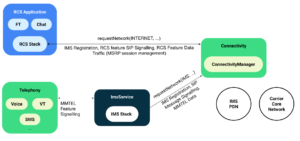In today’s digital age, software applications are crucial in various industries, from banking and finance to healthcare and education. With the increasing reliance on software applications, the importance of software security can’t be overstated.
Cyber attacks and data breaches have become more frequent, and organizations need to adopt cutting-edge safety techniques and strategies to protect their software applications from potential threats. Strengthening software security is critical for safeguarding sensitive data and maintaining the trust of customers and stakeholders.
In this article, you can learn more about the importance of strengthening software security by implementing cutting-edge safety techniques and strategies. With the seven methods mentioned here, you can achieve anything with your business. So, let’s dive in!
1. Use software composition analysis
The first thing you should do to strengthen your software’s security is to use software composition analysis. It’s getting incredibly popular among businesses and individuals for a good reason.
Software composition analysis, or simply SCA, can be used to identify and manage open-source components used in software applications. SCA tools can help detect and mitigate security vulnerabilities and other risks associated with third-party and open-source components.
This type of analysis can also help organizations comply with legal and regulatory requirements on the use of open-source software.
2. Conduct a security risk assessment
A security risk assessment evaluates potential threats and vulnerabilities to an organization’s information systems, assets, and data. Conducting a thorough security risk assessment can help identify potential risks and vulnerabilities in software applications.
With that in mind, it’s easy to see why conducting a security risk assessment is crucial. This assessment should be performed regularly throughout the software development life cycle, including during the design, development, testing, and maintenance stages.
With a good security risk assessment strategy, you won’t have to worry about the safety of your systems and valuable data being compromised.
3. Implement secure coding practices
Secure coding practices refer to coding techniques designed to reduce the risk of introducing security vulnerabilities into software applications. Examples of secure coding practices include input validation, error handling, and access control.
Organizations can eliminate or at least reduce security vulnerabilities and other risks that could attack their software applications by implementing secure coding practices. Everything becomes more manageable with secure coding practices involved, which is why you need to implement them if you want to strengthen the security of your software.
4. Regularly apply software updates and patches
Software updates and patches often contain security fixes that address vulnerabilities in software applications. Many people disregard available updates and patches simply because they can take some time to install.
Nevertheless, ignoring them can cause significantly more harm. Organizations can reduce the risk of hackers exploiting security vulnerabilities by applying software updates and patches in a timely manner. Instead, they can enjoy an increased level of safety across their entire infrastructure.
5. Use encryption and authentication
Encryption and authentication can be used to protect sensitive data and prevent unauthorized access.
Encryption involves converting data into a secret code that can only be decoded with the appropriate key. Authentication involves verifying the identity of users before granting them access to a system or application.
By using encryption and authentication, organizations can provide a high level of security for their employees and systems, allowing them to experience a whole new level of versatility and freedom.
6. Conduct regular security testing
Regular security testing, such as penetration testing, vulnerability scanning, and code review, can help identify and mitigate security vulnerabilities in software applications.
Penetration testing involves simulating a cyberattack to identify potential vulnerabilities and weaknesses in a system or application. Vulnerability scanning involves scanning software applications for known vulnerabilities. Code review involves analyzing the source code of software applications to identify potential security vulnerabilities.
Thanks to these regular security testing procedures, organizations can identify potential security vulnerabilities and take appropriate steps to address them.
7. Implement access control
Access control is the practice of limiting access to software applications and data to only authorized users. By implementing access control, organizations can prevent unauthorized access and minimize the risk of data breaches. Access control can be implemented through various techniques, such as password policies, multi-factor authentication, and role-based access control.
Password policies should be robust, requiring strong passwords that are changed regularly. Multi-factor authentication adds an extra layer of security by requiring users to provide additional authentication factors such as a security token or biometric data.
Role-based access control restricts access to software applications and data based on the user’s role in the organization, limiting access to only what is necessary for their job function.
Final thoughts
A holistic approach to software security that includes software composition analysis, regular risk assessments, secure coding practices, software updates and patches, encryption and authentication, and periodic security testing is necessary to protect software applications from cyber threats.
By adopting these measures, organizations can protect sensitive data and maintain the trust of their customers and stakeholders.






More Stories
How to Effectively Remove ChocoEukor from Your Android Device
From Pixels to Perfection: Mastering the Art of Web Design
How to Stop TinyTask: 10 Effective Techniques for Gamers and Tech Enthusiasts